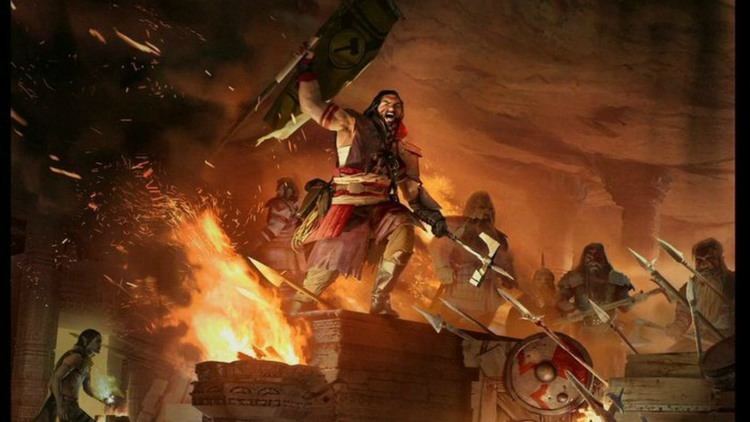Designer(s) Tim Stellmach Writer(s) Joe Fielder Release TBA | Artist(s) Nate Wells Series Underworld | |
 | ||
Similar Ultima Underworld: The Stygi, Wizards & Warriors, Baldur's Gate: Tales of the Sw, Wizardry 8, Arx Fatalis | ||
Underworld ascendant gameplay and interview pax east 2016
Underworld Ascendant is an upcoming first-person action role-playing game developed by Otherside Entertainment. It is the sequel to Ultima Underworld: The Stygian Abyss and Ultima Underworld II: Labyrinth of Worlds. Players assume the role of the Avatar, as they return to the Stygian Abyss. As in the original games, there is an emphasis on non-linear progression, simulated systems, and emergent gameplay.
Contents
- Underworld ascendant gameplay and interview pax east 2016
- Underworld ascendant gameplay sneak peek
- Gameplay
- Development
- References
Underworld ascendant gameplay sneak peek
Gameplay
Players assume the role of the Avatar, a human magically transported into the Underworld. As per the original Underworld games, players create their characters by selecting an assortment of skills, they are not restricted to predetermined character classes. The game is played from a first-person perspective.
The Stygian Abyss is inhabited by three factions vying for its control, Dark Elves, Dwarves and Shamblers. The player can also encounter non-player characters of no factional alignment. Supporting any faction will affect the balance of power in the Abyss, and how factions react to the player.
The game aims to present multiple unscripted solutions to scenarios present in the game, using simulated systems dubbed the "Improvisation Engine," allowing for emergent behaviour with a wide range of player options rather than discrete puzzle solutitons.
Development
Paul Neurath, the designer of the original Underworld games had been in discussion with EA on-and-off for 20 years regarding working again in the Underworld universe. In 2014, EA granted Neurath a license to use the Underworld setting, lore and characters, though this did not allow for the use of the Ultima brand. With the license in place, Neurath founded OtherSide Entertainment, and Underworld Ascension was announced in July 2014.
In February 2015, OtherSide took the game, renamed Underworld Ascendant, to Kickstarter. OtherSide hoped to raise $600,000 towards development of the game, and the crowdfunding campaign concluded in March 2015 with $860,356 raised. Though successful, the campaign left some goals unfunded such as modding tools and cooperative gameplay. Recognizing that a demanding RPG such as Underworld Ascendant could not capture a mass-market audience, Neurath limited the game's budget, believing that, "if you’re spending 50 million dollars you need to reach as many people as possible. You can’t experiment."
With a core team of only six, Neurath describes OtherSide as a mini-studio with an "almost tribal culture", where "everybody knows each other really well, they know their strengths and weaknesses and foibles", allowing for close communication and collaboration. The team at OtherSide included other Looking Glass Studios veterans, such as Tim Stellmach, Steve Pearsall and Robb Waters. Advisors include Austin Grossman, the lead writer of Ultima Underworld II: Labyrinth of Worlds and Warren Spector, producer of the original Underworld games. Spector would later join OtherSide full-time as studio director.
After Kickstarter campaign, the game continued to raise funding on its website, going over US$932,000 with an estimated increase of more than US$60,000.
